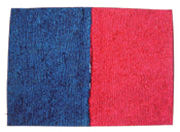Rice-straw sweaters
- More than 2 years ago
From San Francisco, at a meeting of the American Chemical Society

Fibers from rice stems left in fields after the grain’s harvest could wind up in fabrics adorning furniture, car interiors, and people. That’s the prediction of textile scientists who have for the first time extracted from rice straw natural cellulose fibers that can be spun into yarn.
Worldwide, about 560 million tons of straw is left behind in rice fields annually, representing a large, untapped resource of cellulose fibers, says Yiqi Yang of the University of Nebraska–Lincoln. Cotton and linen fabrics contain cellulose fibers from cotton and flax plants.
But to make a strong spun yarn, the cellulose fibers need to be at least 2 centimeters long. So, a cellulose-extraction process must remove some of the lignin and hemicellulose from the rice straw but leave behind enough of these two plant components to bind the cellulose fiber, Yang explains.
Yang and his graduate student Narendra Reddy developed a method that produces fibers 2.5 to 8 cm long. For the extraction, they placed the rice-straw fibers in a basic solution, then moved them to an acidic solution containing enzymes. They washed and dried the resulting slurry, and had the fibers spun into yarn.
The rice-straw yarn “feels like linen,” Yang says. “It’s not quite as soft as cotton.”
Yang predicts that more than 80 million tons of fibers could be made from the rice straw left on the world’s fields. This exceeds the worldwide consumption of both natural and synthetic fibers, which stands at 67 million tons, he adds.
Producing fabric from rice straw would reduce the need for petroleum-based synthetic fibers, such as polyester and nylon, notes Yang. It could also replace some cotton, a crop that requires large amounts of insecticides.







